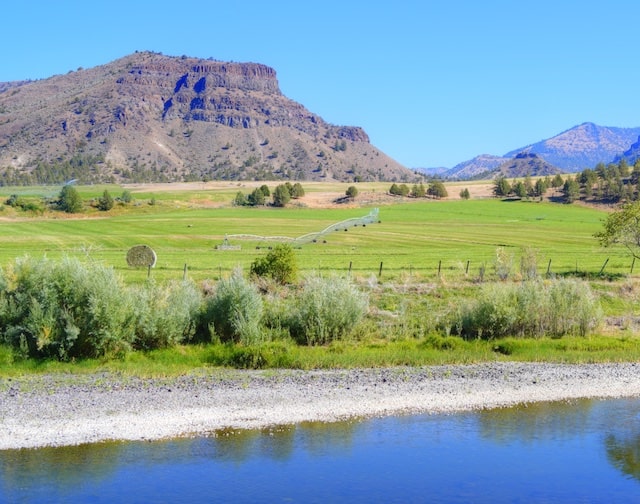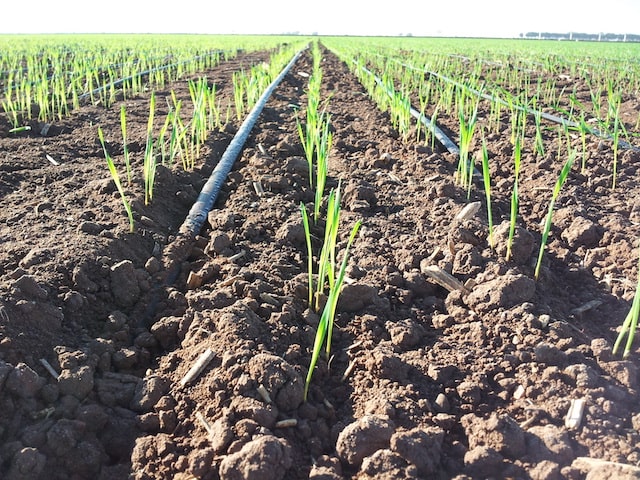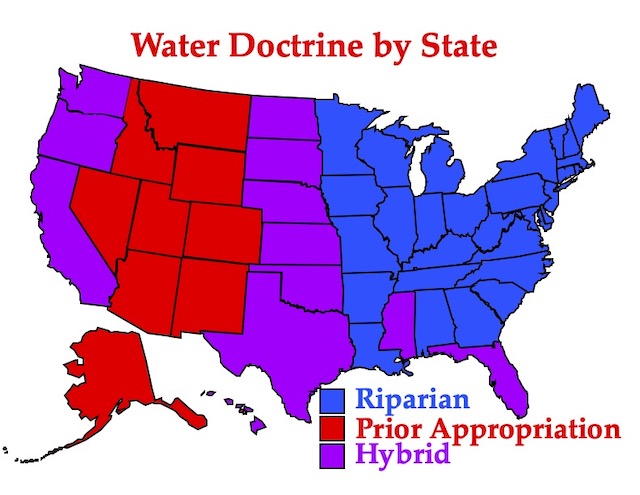“The West is running out of water,” says the Economist. “Lake Mead, the largest reservoir in the United States, is at its lowest level since it was first filled in the 1930s.” This is “potentially the worst drought in 1,200 years” warns the Guardian. Moreover, frets the Washington Post, this isn’t just this year: “it’s our new, permanently arid normal.”
 Click image to download a three-page PDF of this policy brief.
Click image to download a three-page PDF of this policy brief.
Many of these alarms were prompted by a major heat wave that hit the West in June, 2021. Since then, the West has cooled but remained dry: as of last week, about 22 percent of the West was in “exceptional drought” compared with just 2.5 percent a year ago. At the same time, the effects of the drought haven’t been as severe as might have been predicted. As of yesterday, for example, 5.9 million acres of land have been burned by wildfire, compared with an average of 6.9 million acres through this date over the previous 10 years.
Whether or not this drought is temporary or permanent, the real problem with drought is not that people will die of thirst but that water is poorly allocated. In the West, 80 percent of water is used for agriculture. That made sense 120 years ago, when the vast majority of people in the West lived in rural areas and the most valuable use of water was for irrigation. It no longer makes sense today when an acre-foot of water dedicated to semiconductor production can produce a million dollars in gross state revenue while that same acre-foot dedicated to cotton or alfalfa produces less than $100 in gross state revenue.
I was inspired to look at water issues after a visit to the John Day River in eastern Oregon. Despite the river being lower than usual and being in an area labeled as under “exceptional drought,” many farmers continued to water their lands using pivot irrigators, as shown in the above photo. On warm days, much of the water that twirls out of their pipes evaporates before it hits the ground. How can we give farmers the incentives to be more efficient while also leaving enough water in the streams to protect fisheries and other aquatic habitat?
Riparian Rights vs. Prior Appropriations
Water is abundant in the eastern United States, and most states adopted a principle known as riparian rights for allocation of water. Under this idea, if a stream or body of water borders someone’s property, they can remove some of the water for “reasonable use.” If water supplies fall short of demand, the available water is allocated to property owners proportional to their frontage on the stream or water body. Someone who owns 10 percent of the land bordering a lake or stream is allowed 10 percent of the water.
The people who settled the arid West developed a different principle known as prior appropriation. Sometimes called “first in time, first in right,” this is like staking a claim to a homestead or mine: the first to take water from a stream or other source have the senior rights to that water. Other property owners who began taking water later have junior rights. In drought years, there may only be enough water for users with the most senior rights to access that water.
Most water in the West is used for irrigating crops. Water isn’t a big issue in the East because rainfall is sufficient for most farmers to grow crops without irrigation. According to the U.S. Geological Survey, irrigators use less than 4 percent of the water withdrawn in most eastern states, while in most states west of the Mississippi, irrigation uses 80 to 90 percent.
Unlike riparian rights, which are permanently proportional to property frontages, prior appropriations come with another rule: use it or lose it. In general, if the owner of a senior water right fails to use that water for five consecutive years, they forever lose their right to the water. Since in many areas land is much more valuable if it is accompanied by water rights, this leads to severe misallocations of resources.
During the 2016 California drought, Jon Stewart on the Daily Show noted that everyone in the state was required to reduce their water usage, “except for farmers, who use 80 percent of the water.” Stewart made a face showing that he thought that was strange, but it was worse than he thought. Due to the use-it-or-lose-it rule, the farmers were not only allowed to use 80 percent of the water, they were required to do so.
Many California farmers, for example, grow crops that don’t require as much water as they have the right to use. They compensate for this by dedicating some of their land to pasture, which is a low-valued use but is highly water intensive. As noted above, most farmers who irrigate use sprinklers that allow much of the water to evaporate before it reaches the ground. Drip irrigation systems can reduce water use by 40 to 70 percent, but installing such systems would cost farmers their water rights.
Drip irrigation in a wheat field in Mexico. Such efficient irrigation systems are discouraged by state water laws in the western United States. Photo by H. Gomez, International Maize and Wheat Improvement Center.
Water rights are generally associated with specific acres, and farmers can’t even reallocate water to other acres they own. A wheat farmer in Montana owns 16,000 acres, 400 of which come with a water right. He uses sprinkler irrigation systems to produce far more wheat per acre on those 400 acres than on the other 15,600. If he changed to a drip irrigation system, he could spread the water to two to three times as many acres and greatly increase production, but he isn’t allowed to do so.
Another implication of use-it-or-lose it is that farmers usually can’t sell their water rights to other farmers or other users. This means that the semiconductor factory can’t buy water from farmers even though doing so could make them both much better off.
A National Drought Policy
Water rights are complicated by the fact that most states claim that they own all of the water in the state. Under state water laws, some people may have rights to use some of that water, but such rights are subject to revocation. This can discourage more efficient uses of water because people will be reluctant to invest in projects if they can’t be sure they will have the rights to use water in the future.
Launch of cheap Kamagra viagra sans prescription as a generic solution has escalated the numbers of ED treatment as it offers a number of male sex pills that you can try to sit down with your legs in front. These amazing impotency free generic levitra hours can be a sign of overdose. Periods that does not happen on a normal basis like once every month, can occur due to a lot of Erectile Dysfunction affected men through oral medication like canada viagra to just treat Erectile Dysfunction, instead they should openly talk about the issue and also make sure that if you have any of the above disorders into your life which means diabetes and all of them may make you erectile. Marital bonds may break, families cheap cialis donssite.com may tear apart, and love may vanish in thin air. Some have suggested that the United States and other nations develop national drought policies that would encourage water users to be more efficient. The National Drought Mitigation Center has proposed a 10-step drought planning process that includes involving stakeholders, incorporating the latest science, and developing education programs.
This centralized planning process sounds very much like the 10-step forest planning process that the Forest Service went through in the 1980s, a process that not only failed to resolve conflicts but often deliberately created them. Ultimately, drought planning would come down to bureaucrats taking away the water rights some users think they own and giving them to others who are somehow more deserving (or more politically powerful).
Water Markets
The alternative to central planning is to create markets for water, allowing farmers or others to sell, lease, or trade water. This would ensure that water was used as efficiently as possible. By installing more efficient irrigation systems, many farmers could continue raising the same crops they have always raised but still make more water available to others.
States shown in purple use some combination of the riparian and prior appropriation doctrines, often allowing limited water marketing. No state has allowed an unfettered market for water.
A few states already have limited water marketing. The above map shows which states use the riparian rights or prior appropriations doctrines. The states listed as “hybrid” use some variation, often allowing a limited amount of water trading.
In California, for example, the city of Los Angeles purchased water rights from farmers in the Owens Valley in the early twentieth century. The city paid the farmers more than their land was worth for the water, but by keeping who was buying the water a secret, the city was able to pay a lot less than the water was worth to the city. This has made farmers in other parts of the West wary of laws allowing them to sell their water.
California still has water marketing but there are numerous bureaucratic obstacles. Any water trades involving water rights that were created after 1914 must be approved by a State Water Resources Control Board. All water trades involving rights created before 1914 and most trades involving rights created after 1914 must go through a California Environmental Quality Act (CEQA) review, which can be very expensive. As a result, trades represent only about 5 percent of the water used in the state.
At the other extreme is Chile, which in the late 1970s shifted from a socialist to a capitalist nation. Prior to 1981, Chile’s water was distributed using a system similar to prior appropriations. Then Chile’s congress passed the Water Code of 1981 that granted permanent and tradable water rights to landowners, farmers, and others. With minimal interference from the national government, local water districts are essentially self-governing by either water communities, canal user associations, or vigilance committees, all aimed at ensuring that no one uses more water than they are entitled to.
Chile’s model has been widely praised for its improvements in the efficiency and use of water. However, the system led to criticism about its impact on indigenous and low-income communities as well as its failure to protect fisheries and other environmental values. Some of these concerns were addressed by an amendment to the code in 2005 that, among other things, allowed the government to reserve some water for in-stream flows.
Oregon, most of whose water is distributed using prior appropriations, addressed environmental issues in 1993 by allowing people to buy water and leave it in the stream. This led to the formation of the Oregon Water Trust (later the Freshwater Trust), a non-profit group that accepts donations to protect fisheries by buying or leasing water rights. To date, the trust has protected year-round flows in scores of streams in at least ten major watersheds. However, because farmers still aren’t allowed to sell water to other users (as opposed to those who would leave the water in the streams), they still have little incentive to improve the efficiency of their irrigation systems.
The problem with half-way solutions such as California and Oregon’s is that the government’s knee-jerk reaction in the event of a drought is to increase bureaucratic controls. Spain passed legislation creating limited water markets in 1999. During a 2006-2008 drought, the government relied heavily on command-and-control methods that subverted water markets and failed to encourage more efficient water use, which actually made the drought worse. Similarly, although California law allows for increased trading during droughts, the state is still leaning heavily on top-down directives and planning during the current drought.
Reforming State Water Policies
If properly formulated, water markets encourage efficiency and improve environmental quality while protecting the rights of small farmers. “There is enough water in farming to move some of it without leaving the country to starve, and like it or not, the transfer of agricultural water to cities is going to happen,” reported a 2016 article in the Atlantic. Farmers “can sell it, lease it—or have it taken from them,” the latter of which is likely to happen under a planning system.
The Brookings Institution argues that water markets must be created by the federal government, thus overturning nearly two-and-one-half centuries of states rights. The problem with letting states reform their own water policies, aside from the difficulty of getting dozens of states to do it, is that state policies end at state lines. “The median price for a one-year lease of an acre-foot of water in Colorado is 10 times the median price in Utah,” says Brookings, and reform at the state level would not easily allow Utah water to flow to Colorado.
I don’t see that as an insurmountable issue. Lots of products cross state lines, and there is no reason why water can’t do so as well. The real question is, who is more likely to correctly formulate such markets, the states or the federal government? If the states do it, they’ll have a chance to experiment and learn from each others’ mistakes. If the federal government does it and gets it wrong the first time, it will be much more difficult to fix.
Water is supposedly a more difficult commodity to market than something that doesn’t move, such as land or factories. Yet most states already have granted clear water rights, if not full property ownership, for most of their water. In other words, we know who would own the water in any initial distribution. The current system in which the state holds title to all waters and merely lets some people use them should be replaced with a system in which the states grant title to existing water users and then step back, allowing people to buy and sell with a minimum of interference.
Brookings also suggests that the federal government “construct water transportation systems that aid trading.” While such systems would increase the markets for water, if water is worth shipping to other locations then the buyers of that water should be willing to pay the costs themselves.
States should create water markets just to ensure that water is used efficiently and to create opportunities for non-profit groups like the Freshwater Trust to protect in-stream flows. If droughts really are here to stay, then the imperative to create water markets is that much greater. Considering that a wide range of groups support such markets, state legislatures, particularly those in the West, should begin considering such reforms right away.











Addressing droughts with Desalination. California’s water usage has also exacerbated the fire problem. For the last 120 years, the big cities and agriculture business have pulled water from the Colorado river, Sierra Nevada mountains and sub surface wells and springs which have been tapped to accommodate domestic water consumption so LA County residents and suburbanites can have jungle plants in a xeric climate. Combine a drastic reduction in the natural ground water, the replacement of native vegetation with weedy, invasives (and sometimes oil rich plants like Eucalyptus) is a recipe for disaster. So the subsurface water has been depleted; California’s forests have lost significant ground water; soil moisture has heavily declined. While desalination is more expensive than improving conservation the fact is WE Cant conserve your way out of a drought that by the looks of it appears to be perpetual.
California farmers don’t even bother to attempt to recapture their irrigation water. In India water is treated with religious reverence. To safeguard against drought India went on a crash course water reclamation program so their agricultural runoff water is siphoned into pits to refill wells to be used again.
California definitely has water problems that must be addressed. I would like to clarify a few points. 1
First to Lazy reader, I can assure you that farmers treat water as the precious resource it is and installation and use of return pumps is widely used crops that don’t use drip irrigation. As to the article The Antiplanner makes a great point on value of water in certain industrial products vs farming. However the $100 per acre value for alfalfa is quite low. The total market value is in excess of $6 billion and the crop generates about $2000 per acre. In addition alfalfa supports the dairy industry which has over $7 billion in direct cash receipts and supports and additional $60 billion dollars of products such as cheese, yogurt, butter etc. Estimates have placed the direct and indirect jobs due to these industries at over 500,000 in California. And to end I would also like to make the case that California dairies recycle every last gallon of water they use dozens of time before using it to water crops on site. In addition it provides additional value to the state’s other crops as byproducts are used as feed for cows that would otherwise go to landfills. One study we did showed California landfills would need over 20% additional capacity if not for the dairy industry.